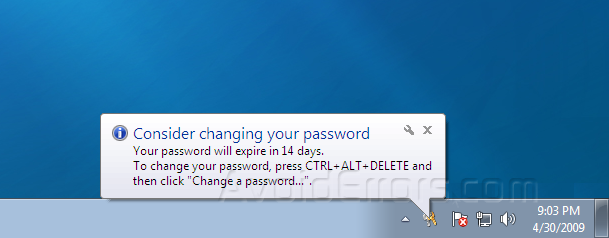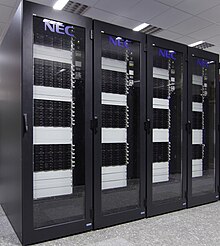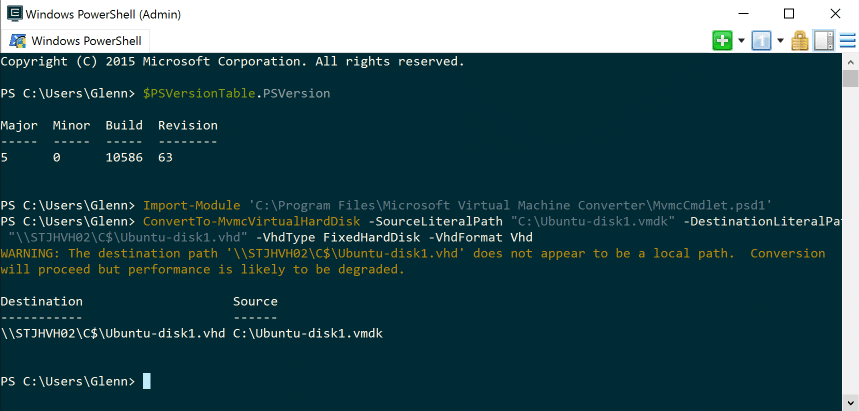
- Virtualization For Mac Server Hosting
- Free Virtualization Software For Mac
- Enable Virtualization Macbook
Sep 13, 2020 Mac users will not be able to use Windows applications without virtualization software. This, in turn, would be the case with the other operating systems as well. Also, this is not about only using different operating systems on the same machine but you can use different versions of the same operating system on one machine simultaneously. Parallels solutions enable seamless delivery of virtual desktops and applications to any device, running Windows on a Mac, Mac management with Microsoft SCCM, and remote access to PCs and Mac computers from any device. Parallels has offices in North America, Europe, Australia and Asia. Full Virtualization: Full virtualization uses a hypervisor, a type of software that directly communicates with a physical server's disk space and CPU. The hypervisor monitors the physical server's resources and keeps each virtual server independent and unaware of the other virtual servers. The Most Trusted Mac Virtualization Software for Over 14 Years Parallels Desktop ™ for Mac. Run Windows, Linux, Mac or Chrome OSes without rebooting. Validate web apps in any browser on any OS, all at the same time.

Parallels Server for Mac running Mac OS X Leopard Server in a VM on top of Mac OS X Leopard Server | |
| Developer(s) | Parallels, Inc. |
|---|---|
| Stable release | |
| Operating system | Mac OS X Server |
| Platform | Apple–Intel architecture |
| Available in | Multilingual[which?] |
| Type | Hypervisor |
| License | Proprietary |
| Website | parallels.com/products/server/mac/ |
Nitro pdf reader for mac free download. Parallels Server for Mac is a server-sidedesktop virtualization product built for the Mac OS X Server platform and is developed by Parallels, Inc., a developer of desktop virtualization and virtual private server software. This software allows users to run multiple distributions of Linux, Windows and FreeBSD server applications alongside Mac OS X Server on Intel-based Apple hardware.
Trial ms office for mac. Parallels Server for Mac was not in development for more than a year[1] before its alpha stage was demoed at MacWorld 2008 [2] and the product was officially released on June 17, 2008.[3] While in beta, Parallels Server for Mac did not allow running Mac OS X Server in a virtual machine; however, Apple eased up on its licensing restrictions before Parallels Server for Mac's GA release to allow running Mac OS X Leopard Server in a virtual machine as long as that virtual machine is running on Apple hardware.[4]
Overview[edit]
Similar to Parallels Desktop for Mac, Parallels Server for Mac is a hypervisor-based server virtualization software that allows users to run multiple guest operating systems, each in a virtual machine, alongside a primary or 'host' operating system. The product's hypervisor allows each virtual machine to function as a standalone server with its own virtualized hardware, memory and processor. However, unlike the desktop software, Parallels Server for Mac is a hardware-optimized enterprise product designed to handle server workloads such as databases and enterprise email and is aimed at the professional market rather than the consumer market.[5] Parallels Server for Mac allows users to run Intel-powered Apple hardware in a business environment without isolating the Mac servers from the organization's Windows and Linux systems.
System requirements[edit]
- Intel-powered Mac server or desktop computer running Mac OS X Server Leopard
- Minimum 2 GB RAM
- 40.5 MB hard disk space for Parallels Server for Mac
- Minimum 150 GB for VM files and virtual hard disks
- Optical drive
- Ethernet or FireWire network adapter
Key features[edit]

Users can run 32- and 64-bit guest operating systems such as Mac OS X Server, Windows, Linux, and Apple UNIX runtime for Xserve and DTK in virtual machines on Apple Xserves and Mac Pros.Parallels Server for Mac comes with Parallels Tools, Parallels Transporter for P2V and V2V migration and Parallels Disk Image tool for modifying the size of virtual disks. Also included are the Parallels Management Console, which allows server administrators to manage the virtual machines both locally and remotely[3] and Parallels Explorer, which allows access to virtual machines without launching the guest operating system.
Additional features include:
- Virtual support for 4-way Symmetric Multi-processing (4-way SMP)
- Up to 32 GB of physical RAM
- 64 MB memory support with up to 8 GB guest memory
- Supports virtual guest disk sizes up to 2 TB
- Supports Intel Virtualization Technology (Intel VT-x)) hardware acceleration
- Advanced Configuration and Power Interface (ACPI) support in VMs
- SDK that enables third-party vendors to incorporate support for Parallels Server for Mac into their own products
- SNMP, Command line interface (CLI)
- VM Assistant to create new virtual machines
Limitations[edit]
Parallels Server for Mac can run only on Intel-based Apple hardware which must be running Mac OS X Leopard Server, not Mac OS X Tiger Server or on PC hardware. Also, at this time, users cannot run Mac OS X versions newer than 10.6 in a virtual environment due to Apple licensing restrictions. Also Mac OS X 10.7 (Lion) and 10.8 (Mountain Lion) and 10.9 (Mavericks) cannot be virtualized with this software.
See also[edit]
References[edit]
- ^Parallels demos Mac server virtualization
- ^Macworld | Parallels Server for Mac demoed at WWDC
- ^ abParallels Server for Mac Announced || The Mac Observer
- ^Virtualization Report | David Marshall | InfoWorld | Parallels announces the first Mac server virtualization platform | June 18, 2008 08:14 AM | David MarshallArchived June 19, 2008, at the Wayback Machine
- ^Parallels Server for Mac available now - The Unofficial Apple Weblog (TUAW)


- Virtualization For Mac Server Hosting
- Free Virtualization Software For Mac
- Enable Virtualization Macbook
Sep 13, 2020 Mac users will not be able to use Windows applications without virtualization software. This, in turn, would be the case with the other operating systems as well. Also, this is not about only using different operating systems on the same machine but you can use different versions of the same operating system on one machine simultaneously. Parallels solutions enable seamless delivery of virtual desktops and applications to any device, running Windows on a Mac, Mac management with Microsoft SCCM, and remote access to PCs and Mac computers from any device. Parallels has offices in North America, Europe, Australia and Asia. Full Virtualization: Full virtualization uses a hypervisor, a type of software that directly communicates with a physical server's disk space and CPU. The hypervisor monitors the physical server's resources and keeps each virtual server independent and unaware of the other virtual servers. The Most Trusted Mac Virtualization Software for Over 14 Years Parallels Desktop ™ for Mac. Run Windows, Linux, Mac or Chrome OSes without rebooting. Validate web apps in any browser on any OS, all at the same time.
Parallels Server for MacParallels Server for Mac running Mac OS X Leopard Server in a VM on top of Mac OS X Leopard Server | |
| Developer(s) | Parallels, Inc. |
|---|---|
| Stable release | |
| Operating system | Mac OS X Server |
| Platform | Apple–Intel architecture |
| Available in | Multilingual[which?] |
| Type | Hypervisor |
| License | Proprietary |
| Website | parallels.com/products/server/mac/ |
Nitro pdf reader for mac free download. Parallels Server for Mac is a server-sidedesktop virtualization product built for the Mac OS X Server platform and is developed by Parallels, Inc., a developer of desktop virtualization and virtual private server software. This software allows users to run multiple distributions of Linux, Windows and FreeBSD server applications alongside Mac OS X Server on Intel-based Apple hardware.
Trial ms office for mac. Parallels Server for Mac was not in development for more than a year[1] before its alpha stage was demoed at MacWorld 2008 [2] and the product was officially released on June 17, 2008.[3] While in beta, Parallels Server for Mac did not allow running Mac OS X Server in a virtual machine; however, Apple eased up on its licensing restrictions before Parallels Server for Mac's GA release to allow running Mac OS X Leopard Server in a virtual machine as long as that virtual machine is running on Apple hardware.[4]
Overview[edit]
Similar to Parallels Desktop for Mac, Parallels Server for Mac is a hypervisor-based server virtualization software that allows users to run multiple guest operating systems, each in a virtual machine, alongside a primary or 'host' operating system. The product's hypervisor allows each virtual machine to function as a standalone server with its own virtualized hardware, memory and processor. However, unlike the desktop software, Parallels Server for Mac is a hardware-optimized enterprise product designed to handle server workloads such as databases and enterprise email and is aimed at the professional market rather than the consumer market.[5] Parallels Server for Mac allows users to run Intel-powered Apple hardware in a business environment without isolating the Mac servers from the organization's Windows and Linux systems.
System requirements[edit]
- Intel-powered Mac server or desktop computer running Mac OS X Server Leopard
- Minimum 2 GB RAM
- 40.5 MB hard disk space for Parallels Server for Mac
- Minimum 150 GB for VM files and virtual hard disks
- Optical drive
- Ethernet or FireWire network adapter
Key features[edit]
Users can run 32- and 64-bit guest operating systems such as Mac OS X Server, Windows, Linux, and Apple UNIX runtime for Xserve and DTK in virtual machines on Apple Xserves and Mac Pros.Parallels Server for Mac comes with Parallels Tools, Parallels Transporter for P2V and V2V migration and Parallels Disk Image tool for modifying the size of virtual disks. Also included are the Parallels Management Console, which allows server administrators to manage the virtual machines both locally and remotely[3] and Parallels Explorer, which allows access to virtual machines without launching the guest operating system.
Additional features include:
- Virtual support for 4-way Symmetric Multi-processing (4-way SMP)
- Up to 32 GB of physical RAM
- 64 MB memory support with up to 8 GB guest memory
- Supports virtual guest disk sizes up to 2 TB
- Supports Intel Virtualization Technology (Intel VT-x)) hardware acceleration
- Advanced Configuration and Power Interface (ACPI) support in VMs
- SDK that enables third-party vendors to incorporate support for Parallels Server for Mac into their own products
- SNMP, Command line interface (CLI)
- VM Assistant to create new virtual machines
Limitations[edit]
Parallels Server for Mac can run only on Intel-based Apple hardware which must be running Mac OS X Leopard Server, not Mac OS X Tiger Server or on PC hardware. Also, at this time, users cannot run Mac OS X versions newer than 10.6 in a virtual environment due to Apple licensing restrictions. Also Mac OS X 10.7 (Lion) and 10.8 (Mountain Lion) and 10.9 (Mavericks) cannot be virtualized with this software.
See also[edit]
References[edit]
- ^Parallels demos Mac server virtualization
- ^Macworld | Parallels Server for Mac demoed at WWDC
- ^ abParallels Server for Mac Announced || The Mac Observer
- ^Virtualization Report | David Marshall | InfoWorld | Parallels announces the first Mac server virtualization platform | June 18, 2008 08:14 AM | David MarshallArchived June 19, 2008, at the Wayback Machine
- ^Parallels Server for Mac available now - The Unofficial Apple Weblog (TUAW)
External links[edit]
I suggest you contact apple legal.
I understand that you have to use the server versions of the OS:
10.6 Server license aggreement
'You may also install and use other copies of Mac OS X Server Software on the same Apple-branded computer, provided that you acquire an individual and valid license from Apple for each of of these other copies of Mac OS X Server Software.' There is more but you get the idea.
see this page:
Verify that you virtualization program supports X. You may need to use the VMWare or Parrallels virtualization program.
Don't worry the server edition includes an extra icon on the dock that you can get rid of.
Virtualization For Mac Server Hosting
You can install as many client versions of X as you wish on your machine. You need to create a separate partition for each copy of X. You can only run one client at a time. No you cannot run a client in a virtual machine. You can create multiple partitions on the laptop. You could install a diffent OS in the partitions.
Free Virtualization Software For Mac
Robert
Enable Virtualization Macbook
Oct 24, 2013 10:55 AM
